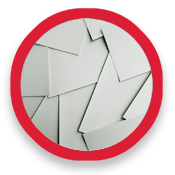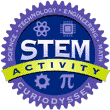SCIENCE EXPERIMENTS FOR KIDS
HOW TO MAKE A PAPER AIRPLANE
Watch your kid’s imagination take flight with this fun and easy project
Making paper airplanes might be one of the oldest activities around, but this simple project can make your child’s mind soar as they get a taste of physics and engineering.
In this activity, students will have an opportunity to build a paper airplane and then make many changes to observe how the flight of the plane changes. Plus, all you’ll need is paper and a paper clip to have your little pilot ready for takeoff.
GATHER THIS:
- Scrap paper
- Paper clip (optional)
THEN DO THIS:
*Download the pdf to view illustrations.
- Crease a piece of paper in half lengthwise and then unfold.
- Fold the top two corners down to the middle fold.
- Fold the resulting triangle down.
- Crease the tip of the triangle up 1 inch and then unfold.
- Fold the top corners down to the center fold so that the corners meet at the base of the crease in the tip.
- Fold the creased tip up so that it overlaps the corners you just folded down.
- Fold the entire paper in half along the original fold so that the tip is on the outside of the folded paper.
- Fold the wings however you would like!
- Hold the paper plane near the tip between your finger and thumb and give the plane a toss! Try holding the plane differently and notice how the plane flies.
- Now design your own folded paper airplane!
ASK THIS:
- Notice what happens when you try throwing the paper plane hard/soft.
- Notice what happens when you try throwing the paper plane upside down.
- Notice what happens if you bend the back edge or tip of the wing up/down.
- Notice what happens if you add a paper clip to the nose of the paper plane.
- Notice what happens if you fold the wings unevenly.
WHAT IS HAPPENING?
There are four forces that act on an object in flight: thrust, drag, lift and gravity. Thrust is what pushes the object forward. Thrust is produced from an engine, an animal wing using muscles to push through the air, or your arm muscles when you throw your paper airplane.
Drag works in the opposite direction of thrust. Drag pulls in the opposite direction of the thrust and is friction on the air, or air resistance.
Lift is the force that pulls or lifts an object up into the air. If the front edge of a wing is slightly raised compared to the back edge of a wing, the air will go slightly faster over the top of the wing and slightly slower over the bottom of the wing. Faster moving air has lower pressure and slower moving air has higher pressure. Lift is a combination of the slower moving air pushing the wing up and the faster moving air pulling the wing up.
Gravity pulls everything on Earth towards the center of the planet, in the opposite direction of lift.
Like this experiment? Explore more flight science with the CuriOdyssey Flight Science Kit in the CuriOdyssey Shop!
WHAT THIS TEACHES:
Themes: Engineering design process
Join the CuriOdyssey Community
LOCATION
1651 Coyote Point Drive
San Mateo, CA 94401
Ohlone Land Acknowledgement
650-342-7755
info@curiodyssey.org
CuriOdyssey is a 501(c)(3) non-profit, Tax ID 94-1262434




